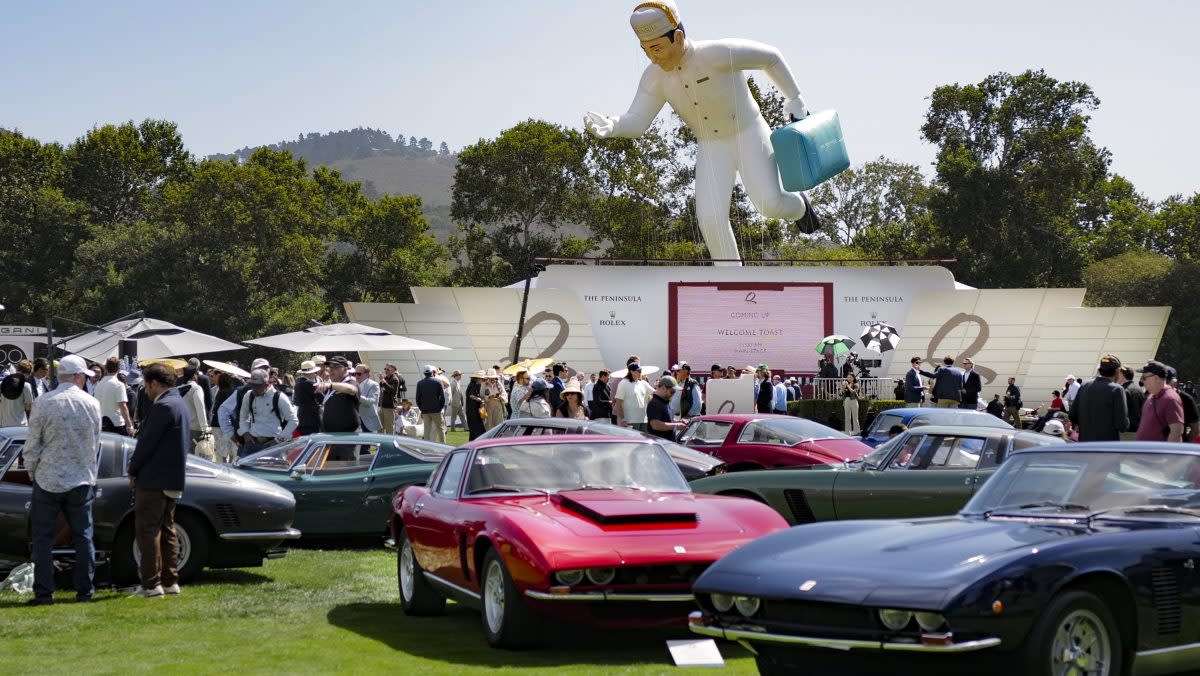
Two events define Monterey Car Week above all others: the Pebble Beach Concours d’Elegance, which is the most prestigious car show in the world, and the Quail, A Motorsports Gathering, which has its own concours and, more significantly, where nearly every major automaker assembles to reveal new models and concepts.
At this year’s Quail, Cadillac, Porsche, Bentley, Lamborghini, Corvette, Acura, Aston Martin, Bugatti, Infiniti, Koenigsegg, Lexus, and Pagani had among the biggest field exhibitions, showing new one-offs, few-offs, concepts, and production models for public consumption. Tuners and smaller marques were also represented, from Czinger to Ruf to Singer. That was all in addition to the concours, which featured scores of cars on display for competition in various traditional categories, as well as cars special to this year’s event, including Formula 1 racers and cars celebrating anniversaries for Iso Grifo, the Shelby Mustang GT350, and the Ferrari F50.
More from Robb Report
This year’s Best in Show was a 1996 Ferrari F50 GT1, which was switched on and revved earlier in the day to the delight of onlookers, among a sea of other F50s. Tickets to the event are limited and run hundreds or even thousands of dollars. Attendees dress their best, sip champagne and coffee, and take in the cars and spectacles like, this year, a parade of IROC cars.
The cars uniformly look their best, too, and while all of them are outstanding by some or many measures, our 10 favorites are below.
Best of Robb Report
Sign up for RobbReports's Newsletter. For the latest news, follow us on Facebook, Twitter, and Instagram.
Click here to read the full article.
Lamborghini Fenomeno
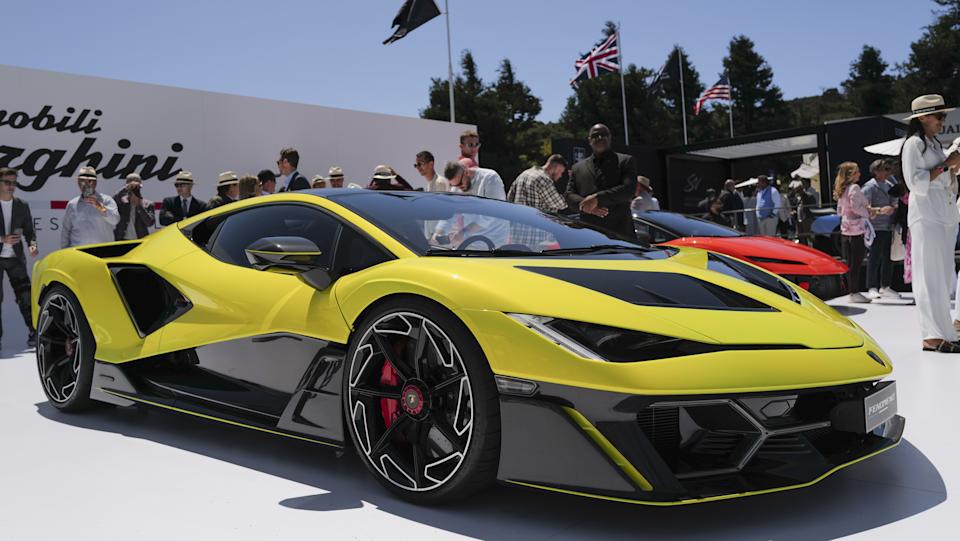
Let’s cut to the chase. This is the most powerful and fastest V-12 Lamborghini to date. The aptly named Fenomeno celebrates 20 years of the marque’s Centro Stile styling studio’s advanced and beautifully aggressive automotive design. Based on the flagship Revuelto hybrid, the Fenomeno is the latest in Sant’Agata Bolognese’s Few-Off series, which includes the Countach LPI 800-4 debuted in 2021.
The output of 1,065 hp comes from a 6.5-liter V-12 complemented by three electric motors—two on the front axle and one at the gearbox. That muscle, harnessed by an eight-speed dual-clutch transmission, makes possible such metrics as a zero-to-62 mph time of 2.4 seconds, the ability to reach 124 mph from a standstill in 6.7 seconds, and a top speed of more than 217 mph.
“The performance jump from the Revuelto to this car is even bigger than the performance step from the Aventador to the Aventador SVJ,” says Rouven Mohr, Automobili Lamborghini’s chief technical officer, adding that there’s also “30 percent more downforce than the Revuelto, and 30 percent more cooling.”
As for its distinctive pseudo-longtail profile, inspiration was drawn from the track-only Essenza SCV12 from 2020. Yet while the latter had 40 built, the Fenomeno will have a production limited to only 29 examples, each starting at $3.5 million.
Bugatti Brouillard
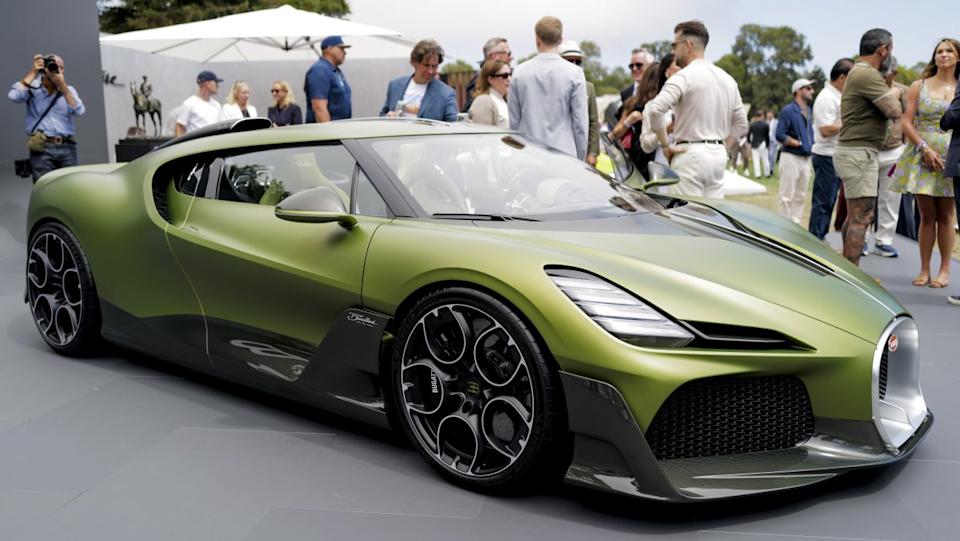
Otherworldly engineering and performance are usually the headlines with any new model release from Bugatti. When it comes to the Brouillard, though, the real tale to tell is its tribute to last century’s golden age of coachbuilding. Sure, the staggering stats are all there, as this is basically a 1,600 hp coupe version of the Mistral roadster, which has a zero-to-62 mph time of 2.4 seconds and a blistering top speed of 273 mph. But the stylistic customization seems equally cutting-edge.
“The central focus for the design of this car was Ettore Bugatti’s love of horses, and in particular, his favorite horse named Brouillard, of which this car is also named,” stated Frank Heyl, Bugatti’s director of design, during the unveiling. “We focused on more sculptural and reflection-based surfaces, and we deliberately avoided any hard crease lines . . . to give this a more organic touch, like the muscles flowing and surging through skin on a powerful thoroughbred horse.”
The equestrian theme is truly showcased in the green-hued, carbon-fiber cockpit, where the depiction of horses runs throughout. Subtly continuing that motif is the use of weaved horsehair for much of the trim, complemented by wool for the seats and a striking tartan print on the steering wheel.
The exterior features the signature horseshoe grille machined from a single block of aluminum, and a center line that extends in subtle relief from the front to across the roof—a contemporary take on the iconic seam found on the bygone-era Type 57 SC Atlantic. With the bespoke Brouillard, Bugatti has clearly let loose the reins on creativity.
Gunther Werks Project F-26

Restomod Porsche 911s are becoming ubiquitous on the automotive landscape, but apart from Singer Vehicle Design’s gallery-worthy reimaginations, few can compete with the rolling art from Southern California–based Gunther Werks, exemplified by its latest reveal, Project F-26.
“My childhood dream car was always the Porsche 935,” says Gunther Werks founder Peter Nam. “With the last eight years of developing cars and building our Turbo, finally we had the platform to be able to build this car and make it a reality—an homage to the 935.” Nam also explains that it pays tribute to Lockheed Martin’s F-26 fighter jet (a prototype that never went into production), doing so by incorporating a number of aeronautical design cues, including those applied to the rear wing and steering wheel.
Propulsion comes from an enhanced 4.0-liter flat-six bolstered by twin turbochargers and an advanced intercooling system. The configuration gives the 2,700-pound (curb weight) slantnose coupe an output of 1,000 hp and 750 ft lbs of torque when using E85 fuel, and 880 hp on standard gas. That muscle is managed by the same six-speed manual transmission found in the 996 GT3, and tempered by a suspension that, according to Nam, “adjusts 1,000 times per second.” Only 26 examples will be made, each with a base price of $1.45 million.
GMSV S1 LM
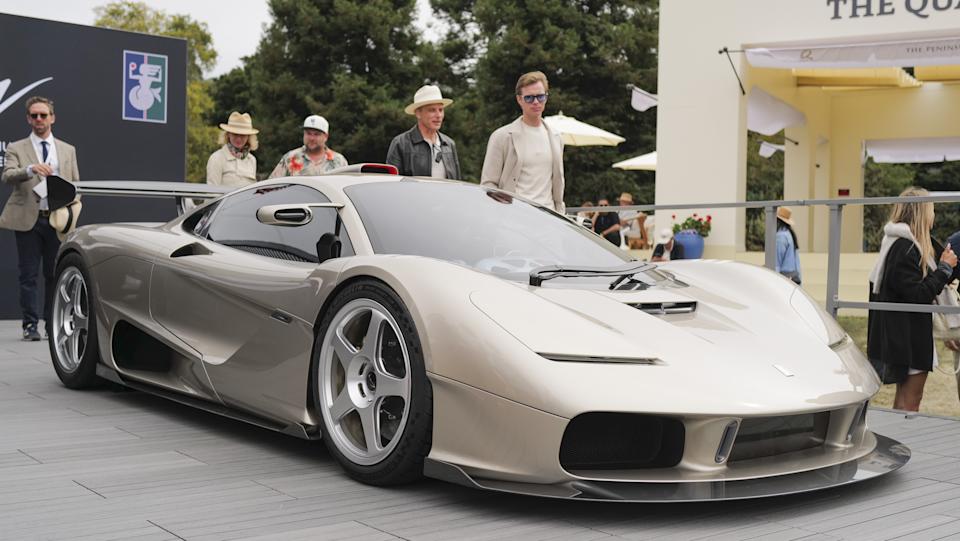
What do you get if you take what the world considers your masterpiece, set out to improve on it, then attempt to do so again. If you’re the legendary Gordon Murray, the result is the S1 LM (“Special One Le Mans”). This is the first bespoke model from the Special Vehicles division of Gordon Murray Automotive (GMA), and it commemorates his 1995 Le Mans–winning machine. According to the team, the S1 LM shares similar underpinnings to GMA’s T.50 an T.50s, but all the body panels are new, the naturally aspirated engine—making more than 700 hp—has been enlarged to 4.3 liters of displacement, and the entire car has a target weight of less then 2,100 pounds.
“It’s really inspired by Gordon Murray’s philosophy of lightweight; and in design, I love the similar approach of distilling DNA . . . timeless design, as little design as possible,” mentions Florian Flatau, the man who penned the extremely limited-edition model. “It’s taking the DNA of the original F1, like a family member, but really trying to become its own animal.” Only a concept version was unveiled at Quail, but the plan is that five of these bantam-weight beasts come to fruition, though pricing and intended performance specs have yet to be revealed.
Hennessey Venom F5 LF
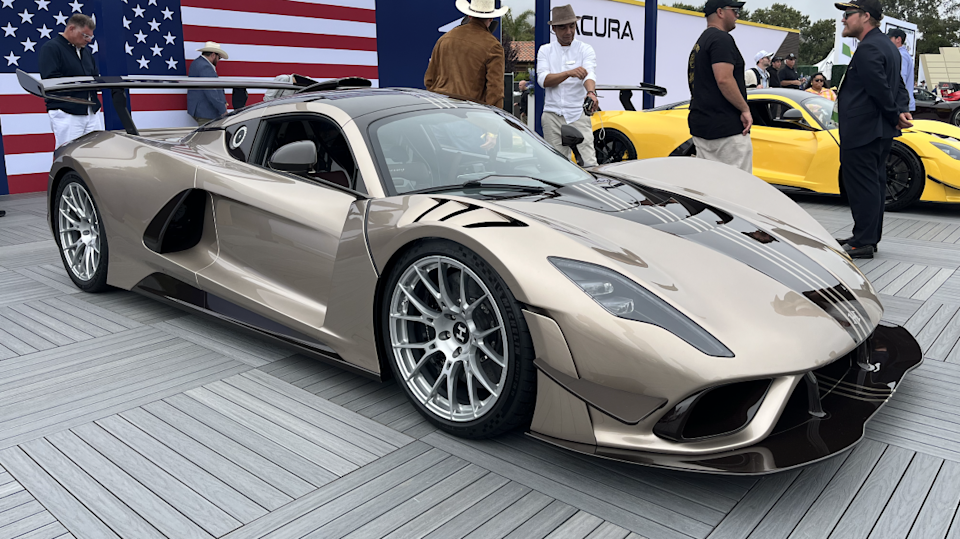
When asked about the design brief he was given prior to embarking on Hennessey’s latest dream machine, Nathan Malinick, design director for the Texas-based marque, quipped; “Make the coolest manual hypercar of all time . . . so no pressure there.” The result of that directive is the Hennessey Venom F5 Revolution LF, a one-off variant to the Venom F5 model, which first appeared in production guise back in 2020. Although originally known as a tuner, John Hennessey had long been driven to create a car from the ground up.
“The Venom F5 is the only thing that we’ve ever built that was like a clean sheet of paper,” Hennessey told Robb Report in an interview five years ago. “We took everything that we knew and liked from the previous 29 years and tried to put the best of all of our know-how in the all-new car.” And he has not stopped the refining process.
According to the official press release, this LF features an all-new carbon-fiber tub and 6.6-liter twin-turbo V-8 that makes more than 2,000 hp. Remarkably, that engine is paired with a six-speed manual transmission controlled via an H-pattern gated shifter—proof that analog still has powerful allure. And while this is a unique commission, it’s an example of what can be expected from Hennessey’s new special-projects division dubbed “Maverick”—a moniker befitting the founder himself.
Ferrari F50 GT1
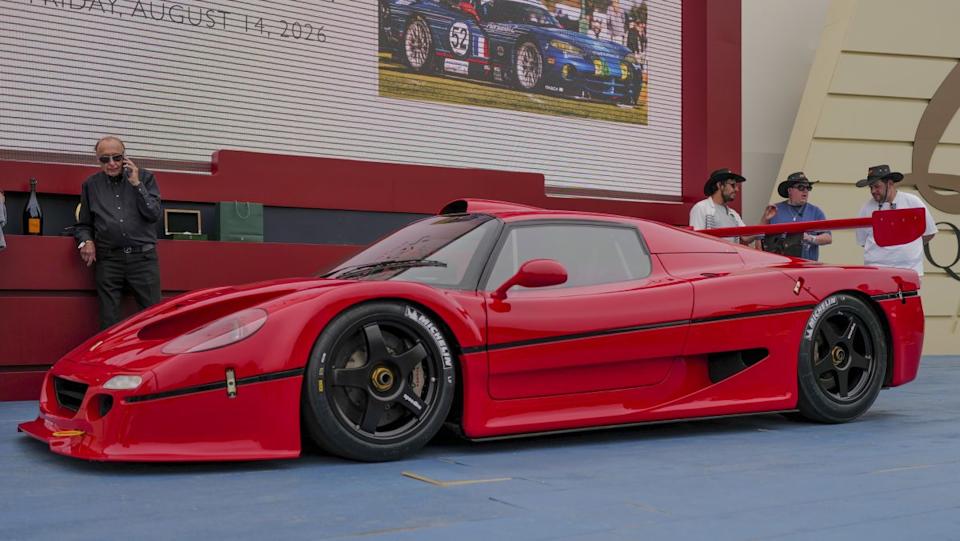
This 1996 example of Ferrari’s legendary F50 won Best in Show at this year’s Quail, a departure from last year’s Best in Show winner, a 1937 Delahaye Type 145, which was more typical of Best in Show winners at the Quail, which have historically all been cars much older than 1996.
Supercars are also not typical winners at concours, and many wondered if the F50 winning this year represented perhaps a generational change for the Quail, and maybe even concours events as a whole.
Or perhaps this F50 is just a truly outstanding car, powered by a naturally aspirated V-12 that makes 739 horsepower mated to a six-speed manual transmission. It was built to beat the McLaren F1, and just three of them were made. Its sound alone is transporting.
Lexus Sport Concept
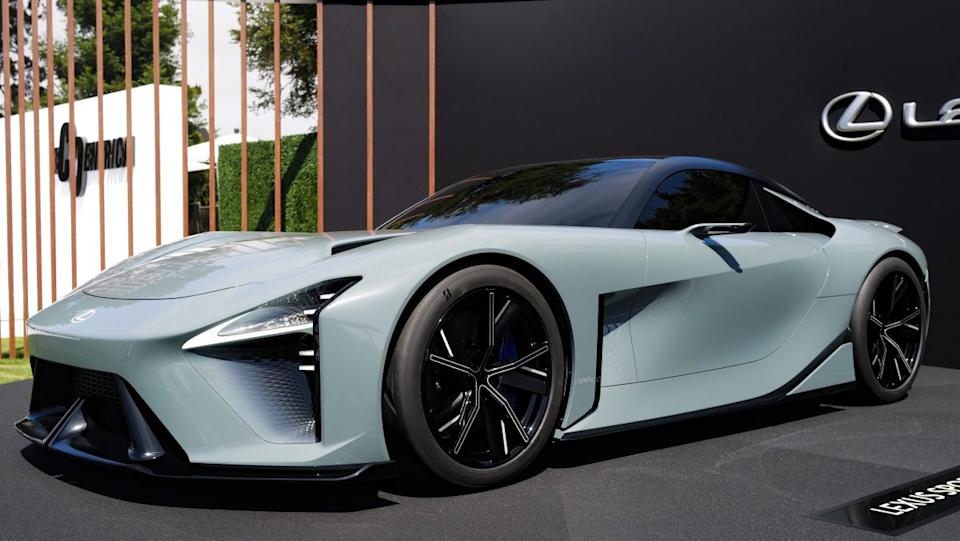
Lexus was not expected to show its Sport Concept at the Quail, so it was a surprise when that’s exactly what it did. The Sport Concept might even be the successor to the LFA, which is one of the greatest cars ever made.
The Sport Concept looks a lot like a concept that Lexus first showed a few years ago, that was “electrified” back then, though with this latest version Lexus did say how it would be powered, whether by electric motors, an internal combustion engine, or both. A different Lexus supercar under development, called the LFR, is thought to have a hybrid V-8 setup, so it wouldn’t be a surprise if the Sport Concept was all-electric.
Regardless, the car looked ready from the outside, a low-slung, two-door stunner.
Cadillac Elevated Velocity
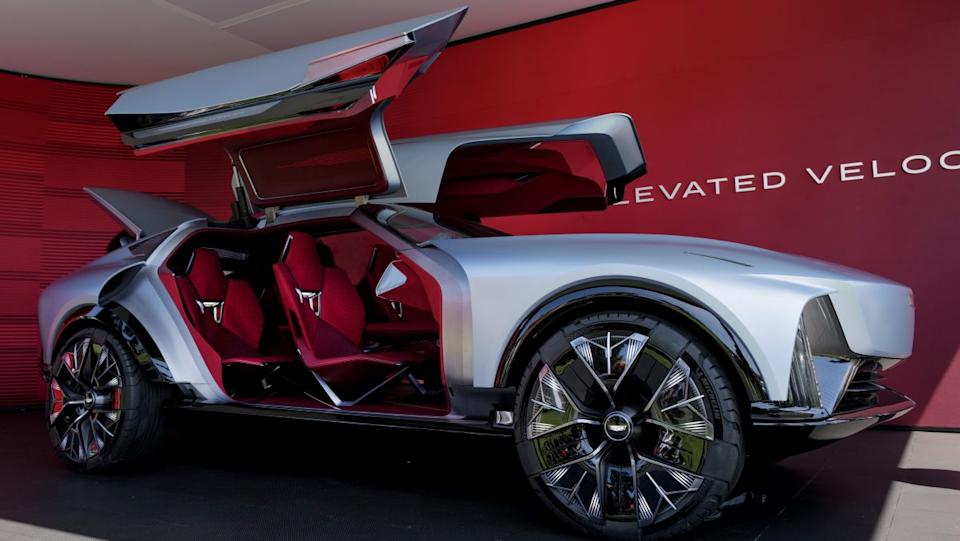
The Elevated Velocity was also a surprise, but in different way, in that it is an off-roading, performance SUV that sits high from a brand not necessarily known for any of those things. The Elevated Velocity is a version of a protoype Cadillac showed last year, called the Opulent Velocity.
The wheels are 24 inches, the gull-wing doors are a conversation starter, and the all-electric powertrain is likely to be very fast, though Cadillac did not reveal any performance numbers. On the other side of Cadillac’s field exhibition was its Celestiq, an all-electric sedan that is expected to start at around $340,000, in a play for ultra-luxury that may or may not have Rolls-Royce and Bentley worried.
The Elevated Velocity is something else, a vision of Cadillac that is ready for a race in the desert. Cadillac is also, of course, racing in Formula 1 next year, signalling a few different directions for a brand that has been a bit aimless for years now. The Elevated Velocity is one direction we hope will stick.
Czinger 21C
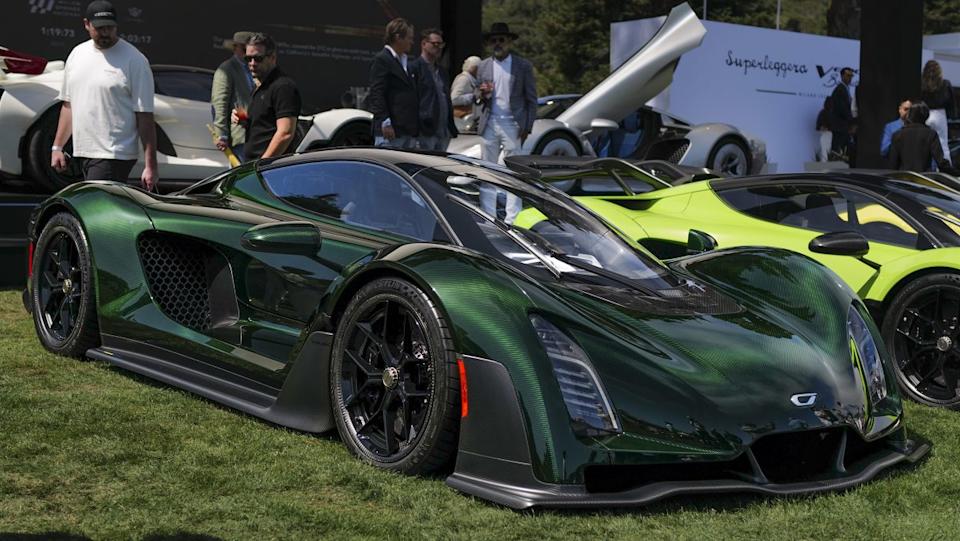
Czinger was one of the bigger presences at the Quail this year, seemingly determined to compete with players it considers rivals, including bigger names like Gordon Murray Special Vehicles, Koenigsegg, and Bugatti.
To that end, Czinger has been busy in recent times setting various speed records with its 21C, a seven-figure price hypercar, several of which were on display Friday. Czinger 21Cs are built primarily for the track, though the 21C V Max drops the rear wing to enhance aerodynamics for straight line speed instead of downforce and grip.
As such, it also looks more restrained than the maximalist 21Cs that attract more attention. In this shade of green, the 21C V Max might even be considered classy. At a place where there is a strong incentive to look loudest, this 21C looked among the best.
1967 Toyota 2000GT
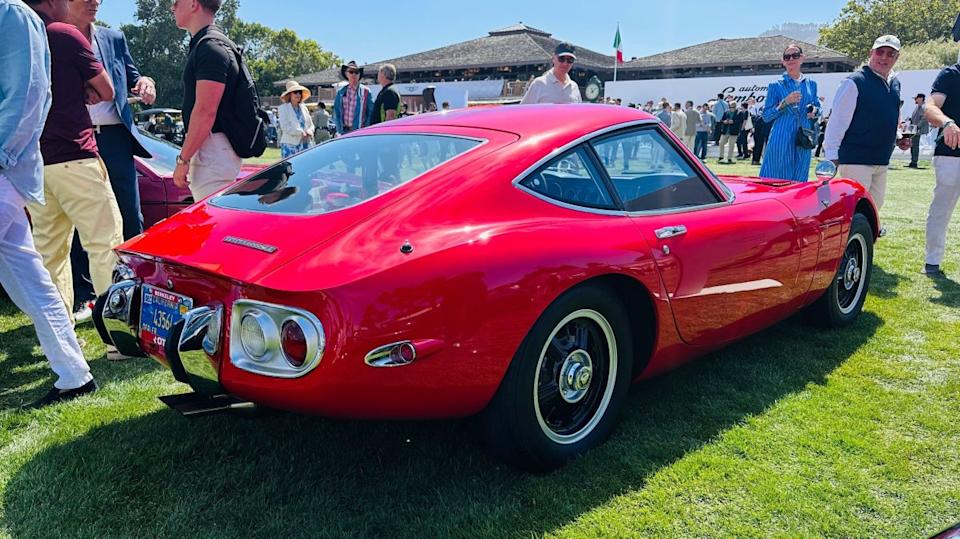
This 2000GT was one of just a few that were sold new in Switzerland, one of just 84 left-hand drive models that were ever built, of 351 2000GTs that were produced in total. This 2000GT was also a class winner at the Quail, proving, as it did when it debuted in 1965, that it could compete and beat supercars made by American and European manufacturers.
In person, what’s surprising about the 2000GT is how modern it looks, even 60 years later. It wasn’t exactly considered a supercar in 1965, but that was also an era when the word supercar was not used and abused. Today, it’s a super car by any measure, and onlookers at the Quail agreed, as it attracted a steady stream of admirers. Judges agreed, too.




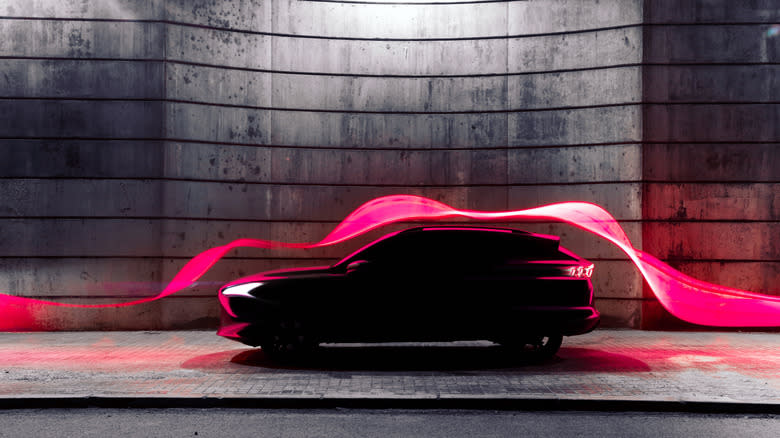


Comments